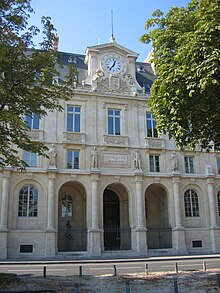Nancy-Université
Appearance



Nancy-Université federated the three principal institutes of higher education of Nancy, in Lorraine, France before their merger into the University of Lorraine:
- Henri Poincaré University (UHP, also known as Nancy 1): natural sciences, wrapping several faculties and engineering schools
- École Supérieure des Sciences et Technologies de l'Ingénieur de Nancy: general engineering
- École Supérieure d'Informatique et Applications de Lorraine: Computer Science engineering
- Nancy 2 University: social sciences
- Institut national polytechnique de Lorraine (INPL): engineering schools, notably :
- ENSEM: electrical and mechanical engineering
- Mines de Nancy: general engineering
- ENSIC: chemistry
- ENSAIA: agricultural engineering
With over 50 000 students, Nancy has the fifth largest student population in France.
Libraries
Nancy-Université has several academic libraries. The academic library of Nancy 2 University, opened by French president Albert Lebrun, contains around 500 000 documents, among which at least 250 000 are books, in 35 locations.
History
The original University of Nancy was founded in 1572 in the nearby city of Pont-à-Mousson by Charles III, duke of Lorraine, and Charles, Cardinal of Lorraine, and transferred to Nancy in 1768. It was closed by the revolutionaries in 1793, and reopened in 1864.
Notable personnel
- François Gény (1861–1959), French professor and jurist who introduced notion of "free scientific research" in positive law.
See also
External links
